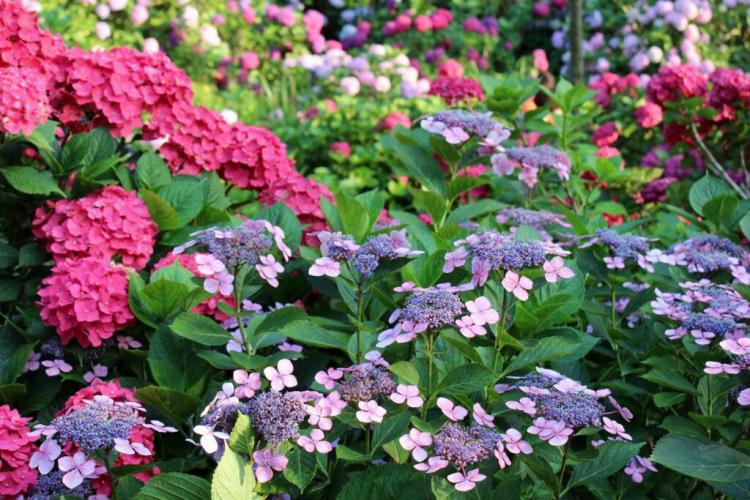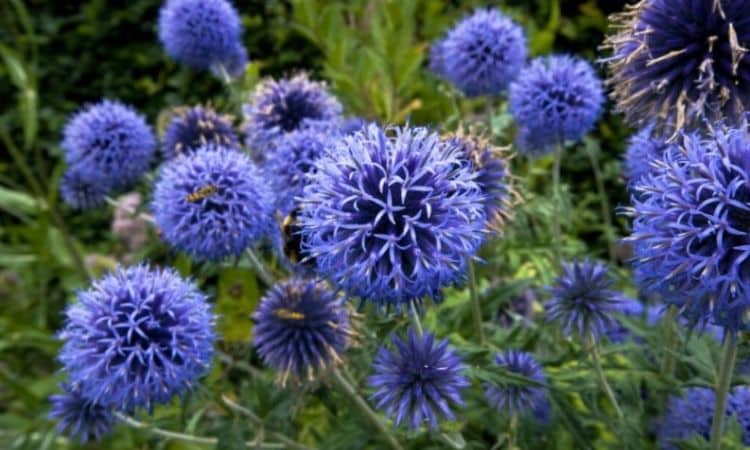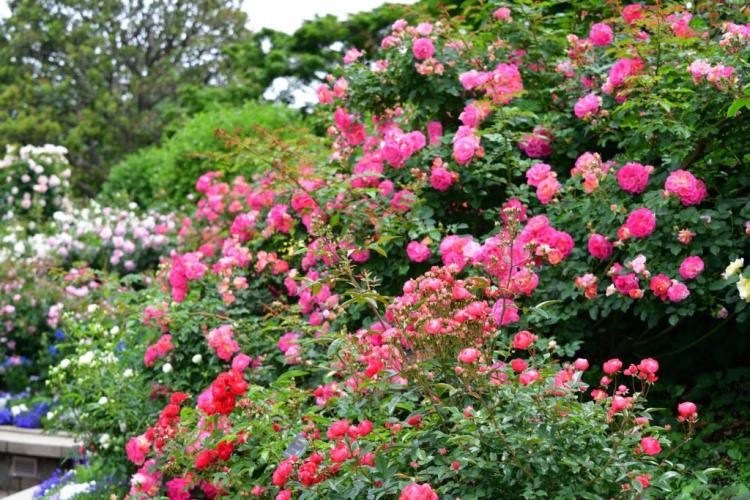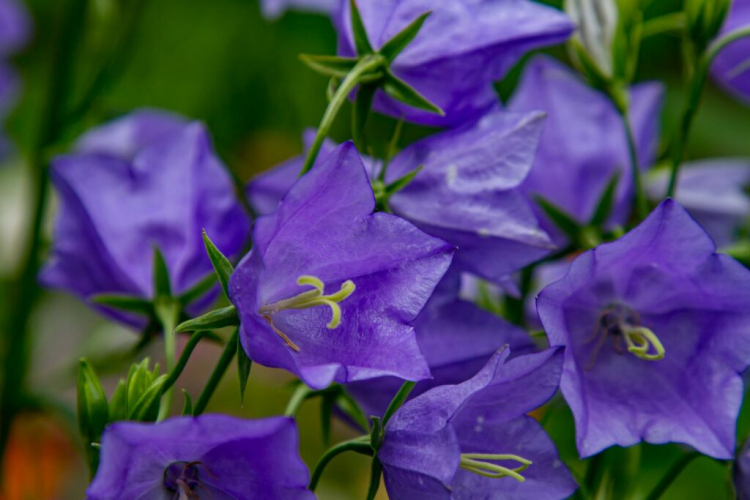Hydrangea Fertilizers: Everything You Should Know
Hydrangeas have a high need for nutrients. Here you can find out whether and why hydrangea fertilizers are really necessary and what the differences are. The genus Hydrangea includes 70 to 80 species, several of which are very popular in our gardens. They delight almost everyone with their characteristic inflorescences, but some species are real divas when it comes to their location, hydrangea care, and nutrient supply.
Hydrangeas do not always show their most beautiful side. We explain why hydrangeas benefit from a special fertilizer, what it consists of, and how organic, mineral, blue-coloring and organic hydrangea fertilizers differ.
Why do hydrangeas need a special fertilizer?
Table of Contents
The nutritional requirements of hydrangeas are very high overall. Of the three main nutrients, nitrogen (N) and potassium (K) are mainly required in larger quantities, while less phosphorus is required. In addition, the need for iron is increased in many species. Some hydrangea species – such as the velvet hydrangea ( Hydrangea sargentiana ) and the climbing hydrangea ( Hydrangea petiolaris ) – react quickly to suboptimal care and nutrient supply with a failure of the flower or frost damage.
In addition to the right supply of nutrients, the properties of the soil or potting soil are crucial for the successful care of hydrangeas. Their high water requirements call for a humus soil that can store a lot of water, for example. At the same time, waterlogging must not occur, because the plants also suffer from this. Almost all hydrangea species also require a fairly low soil pH. This not only influences the color of the flower of the farmer’s hydrangea (Hydrangea macrophylla ) but in particular the ability of all hydrangeas to absorb nutrients. An unsuitable pH value of the soil can lead to malnutrition. Since soil properties are influenced by the type of fertilization, choosing a special hydrangea fertilizer is a practical way of promoting healthy, well-flowering plants.
You Might Also Like Watering Hydrangeas
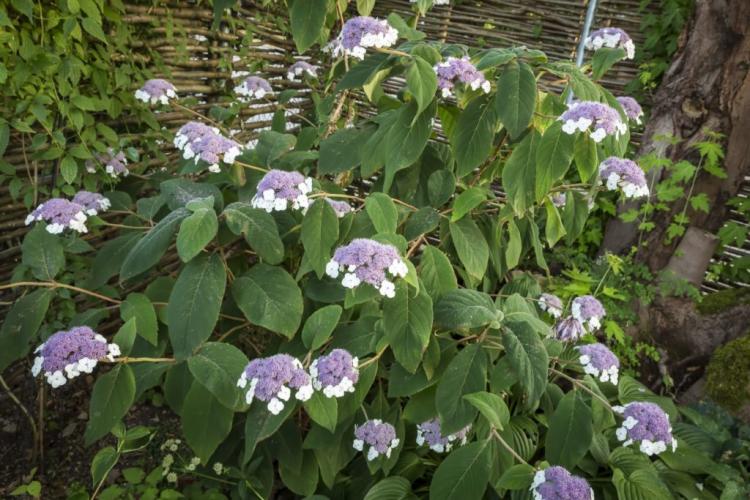
What is hydrangea fertilizer made of?
Hydrangea fertilizers can be mineral, organic or organic-mineral. While mineral fertilizers only contain the raw nutrients as quickly soluble fertilizer salts, the nutrients in organic fertilizers are bound in natural structures that are only released through biological and chemical processes in the soil. Organic fertilization maintains and nourishes the soil life and can thus improve the soil’s properties. Organic-mineral hydrangea fertilizers combine both types of fertilizer and therefore have both a high speed of action and a natural long-term effect while maintaining soil quality.
You might so like: Panicle Hydrangea: Plants, Propagation, Cutting And The Best Varieties
Tip: Because hydrangeas love acidic locations, some special fertilizers even contain substances that acidify the soil. The “alums” are a group of sulfuric acid compounds made of metal ions, sulfate, and water. When alum is dissolved in soil water, the pH value drops due to the release of protons (H + ions). This effect also leads to the blue flowers of the farmer’s hydrangea (Hydrangea macrophylla ) – but only for a short time. The creation of a constantly acidic environment around the hydrangea has a more sustainable effect. If the soil pH value is not very acidic, the farm hydrangea shows its flowers in classic pink or white.
Hydrangea fertilizers in comparison
The type of fertilization has a strong influence on the vitality of your hydrangeas. However, it is not only the nutrients it contains that are decisive, as you will find out below.

Mineral hydrangea fertilizer
Mineral hydrangea fertilizers in liquid and solid form provide a precisely defined range of nutrients. In addition to nitrogen, phosphorus, and potassium, they sometimes also contain a selection of trace elements. It is possible to supply your hydrangeas with such a fertilizer, but with regular use, the following negative effects occur:
- The micro-nutrient stocks of the soil or the potting substrate can be depleted, and deficiency symptoms that are difficult to recognize in the plant can be the result.
- The high concentration of nutrients promotes the degradation of humus, but no new material is introduced to build up humus. As a result, the humus content of the fertilized soil and, at the same time, its quality decreases.
- If used incorrectly, mineral fertilizers can also cause fertilizer damage: susceptibility to frost and failure of bloom is possible.
You might so like: PK Fertilizer: Explanation Of Terms, Effect And Application
Blue hydrangea fertilizer
Because the almost glowing blue color of farm hydrangeas inspires many garden owners, they are ready to buy so-called “blue-colored” hydrangea fertilizers or “blue hydrangea fertilizers”. These acidify the soil with aluminum sulphate for a short time. It can even be purchased pure, so you can make blue-colored hydrangea fertilizer yourself. However, caution is advised when using it: aluminum is a cell poison that damages plant roots. It only becomes available at low pH values and, in too high doses, can severely inhibit root growth.
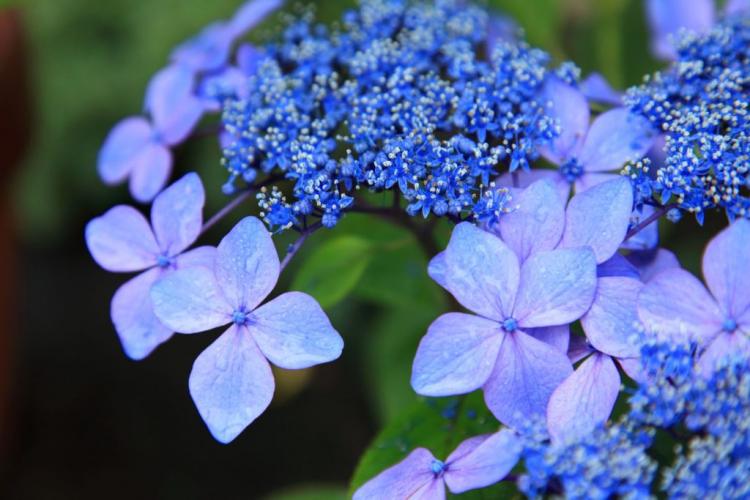
Note: If you want to find out more about the correct fertilization of hydrangeas, we will share our professional tips with you here.
Organic hydrangea fertilizer
Organic fertilizer for hydrangeas fertilizes the soil as well as the plant. The organisms in the hydrangea’s root space are nourished and release the fertilizer nutrients for the hydrangea. In addition, the material introduced is built up into new humus molecules in the course of humification. In this way, any degraded humus is replaced and the soil qualities that are so important for the hydrangea – water retention capacity, soil aeration, and nutrient availability – are promoted. One problem with organic hydrangea fertilizers, however, can be that they work slowly. Predictive fertilization is necessary because the release can take up to a month depending on the weather and the associated microorganism activity.
Organic hydrangea fertilizer
Organic fertilizers are organic-mineral fertilizers with an organic certificate. Like all organic-mineral fertilizers, they combine the advantages of the two opposing types of fertilizer, but for the most part, rely on organic components. The mineral components serve to supplement and optimize the effect and must also be permitted in organic farming. Organic hydrangea fertilizer has such an organic certificate. In addition, only vegetable raw materials are used.
You might so like: Fertilizing orchids: procedure & care tips from the experts
The production is therefore many times more environmentally friendly and the application is possible for a broader mass of users without a guilty conscience – because this fertilizer has nothing to do with resource-devouring factory farming. The nutrient content is adapted to the special needs of hydrangeas and in addition to the main and trace nutrient elements it contains, iron is also contained in a slightly higher dose to prevent the very frequent iron deficiency of hydrangeas.
Make hydrangea fertilizer yourself: fertilize hydrangeas with coffee grounds
Bargain hunters can also make fertilizer for hydrangeas themselves. Manure manure, for example, works quickly and is rich in all three main nutrients. Extra iron can be brought in with nettle liquid manure. The production of these liquid manure takes a few weeks each. Aside from a little patience, you don’t need much more than a large, watertight vessel – such as a mason’s bucket.
Compost is not necessarily suitable for hydrangeas: it often has a pH value that is too high, which can lead to problems with the uptake of nutrients in the hydrangea genus. But you can still use your organic waste to fertilize hydrangeas: In a Bokashi bucket, there is no composting, but fermentation. The lactic acid bacteria contained in it acidify your organic waste. The result can, for example, be hidden under a layer of mulch around the hydrangeas. Due to the fermentation in advance, the surface composting then takes place very quickly and nutrients are provided.
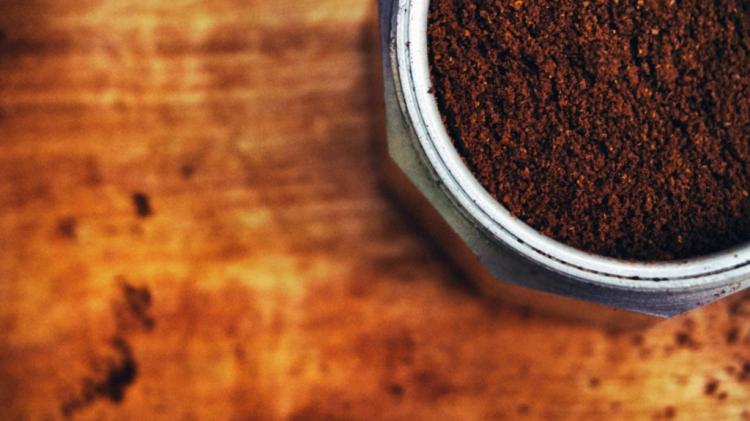
Last but not least, we would like to introduce you to a self-made hydrangea fertilizer that is absolutely suitable for everyday use: Coffee grounds from the French press or the filter are slightly acidic and provide nutrients to a lesser extent. Together with a nutrient-rich fertilizer, however, it forms the perfect basis for humus formation and thus for improving the soil around your hydrangeas.
You might so like: Fertilizing common loquat: Expert tips for perfect fertilization
